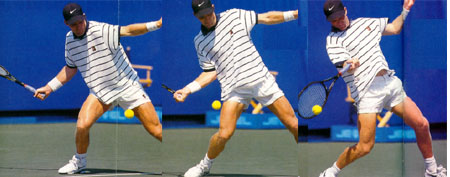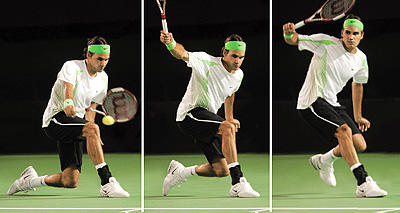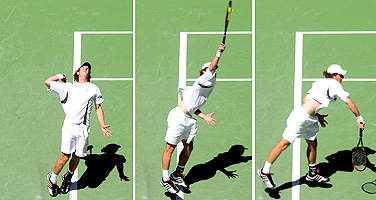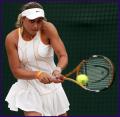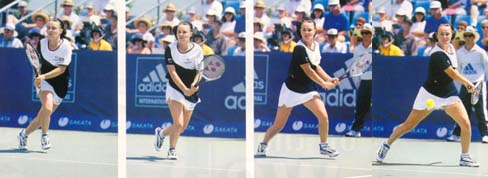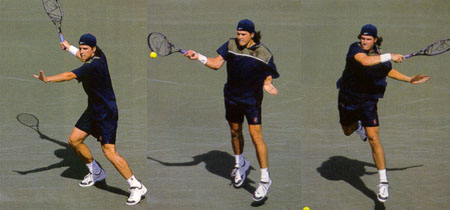
|
||||||
|
PRACTICE PRACTICE PRACTICE |
|
"Hard work pays off in the future. Laziness pays off now." - Helen
Keller
Once you've received a few lessons, the next thing to do is find
a partner and play. If it's practice you want, ideally, it's much better for you to play with someone who can hit consistently
and accurately, rather than with someone else who is also learning how to play tennis.
The reason for this is that your rallies will be much longer, you'll get to hit more balls (and less time picking them up), and you'll improve much faster. If you can't find a hitting partner (or even if you can), another great way to fast-track your improvement is to practise against a wall or volley board.
We are what we repeatedly do. Excellence, then, is not an act, but a habit.-Aristotle
|
|
Work on your racquet preparation and footwork.
Learn to skip sideways: If skipping sideways as you move to a ball is something new to you, you must learn it quickly. It is an essential to backcourt play because you must watch where your stroke took the ball and what your opponent is doing.
You will see the pros making these skip steps frequently as they judge and just before jumping for the ball, they try to have the right foot in correct position to gain spring to where they wish to strike the ball. Such "dancing" movements become part of their game they would be a little surprised if told they had "danced" about the court.
Whether hitting a forehand or backhand, you always want to take your racquet back early.
You should strive to get into position to make contact in your comfort zone as frequently as possible.
Depending on your preference, that’s generally somewhere between thigh and chest height. No matter where your rebound’s shot lands, you want to react and move to make contact at the same ball height each time. This will build consistency in your ground game.
Once you feel confident with your crosscourt shots, try hitting everything down the line. Keep all your shots in that half of the court and make sure to move so that if you’re supposed to be hitting forehands, that’s the only shot you hit.
-Thomas Jefferson
-Robin Williams
-- Bill Tilden
